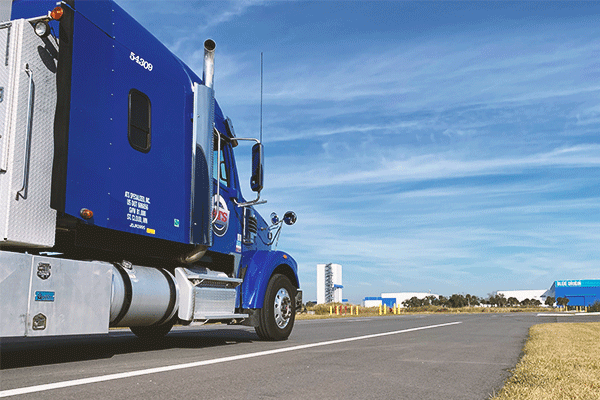
Your open-deck shipping price, although difficult to predict, is important to understand. Budgeting your transportation dollars appropriately is crucial to managing your company’s supply chain logistics. But why is it so difficult to do so?
This nation’s carriers and transportation providers aren’t exactly actively supplying answers to questions like “what will my freight cost me?” or “what factors impact my pricing?” in a way that’s easy to understand.
And unfortunately, this leaves shippers, like you, at a real disadvantage.
You shouldn’t have to reach out and “request a quote” every time you’d like to learn a bit more about what your freight will cost. No, this information should be far more accessible and we’re here to make it so.
At Anderson Trucking Service (ATS), we’ve priced a lot of open-deck freight. . . like a lot, a lot.
As such, we firmly understand the factors that impact the price of moving open-deck freight around this nation’s highways. And, it’s time you did too.
For your legal open-deck (flatbed, step-deck, lowboy) freight, expect to pay a rate-per-mile (RPM) in the range of $1.75-$4.25.
Still, that’s a big range. Why is this the case? Below, we’ll outline each factor in-depth to give you a better understanding of the things that influence your final open-deck freight rate.
This information shouldn’t belong to transportation companies alone. It’s time to level the playing field and give you better control over your shipping dollars.
Let’s get started. . .
⏬ Listen to The Podcast on This Topic ⏬
The 8 Largest Factors Dictating Flatbed Shipping Rates Are:
- The specifics of your load
- The type of open-deck equipment you need
- Your shipment’s origin and destination
- Seasonality
- Your freight’s length of haul
- The urgency of your shipment
- Accessorial charges
- Current weather conditions
#1 The Specifics of Your Freight
Every load is different when moving open-deck freight. Details like how high and wide your freight is, directly impact the price you’ll pay to move it. For this reason, it’s important that — to get the most accurate pricing on your shipment — you communicate the specifics of your freight before you tender it to a provider.
But how do the specifics of your shipments impact your freight rates?
To answer this question, we’ll want to take a closer look at what’s considered the “specifics” of your load.
To quote a shipment in this industry typically requires two very important details (specifics) that drive its rate-per-mile:
- The dimensions of your freight
- The total weight of your freight
In tandem, these “specifics” influence not only the type of open-deck trailer used on each haul but the cost of doing so.
Height, width and length are the three dimensions that matter most when moving open-deck freight. And, once freight reaches certain thresholds on each, moving it gets more complex.
For example, a load with an overall length of 28 feet, based on this metric alone, can be transported on a number of different trailer types.
Both flatbed and step-deck trailers are able to handle loads of this length and the price difference between using a flatbed vs. a step-deck isn’t substantial. So, at this point, either trailer will do the job.
But, the fact that this load is also 11 feet high disqualifies both of these equipment types from contention.
Instead, more specialized solutions (coming at a higher price-point) such as a double-drop trailer — which can support a height of up to 11 feet, 6 inches — must be used.
Beyond this, each state in our nation has specific laws in place to regulate the size of freight allowed to traverse freely across their highways.
And, as soon as freight exceeds these thresholds for height, width and length, over-dimensional (OD) permitting and special care must be taken to transport it.
The cost of OD permitting varies by state, dimensions and a myriad of other factors. That said, expect to pay in the range of $25-$300 for each state your freight travels through — with an average of $100/state.
#2 The Type of Equipment You Need
Open-deck shipping can be done on a number of different trailer types.
From the traditional flatbed trailer to step-decks and lowboy trailers, if it needs to be moved, there’s a trailer designed to get the job done.
That said, there is also a large discrepancy in pricing from one type of trailer to the next. More specialized trailers require special training and fine-tuned expertise from the drivers operating them. . . expertise that comes at a cost.
Sometimes, there simply aren’t as many open-deck trailers of a certain type as others. As such, should your freight require it, you’ll have to pay an increased RPM for trailers that are in shorter supply.
For example, if you need a trailer with a removable gooseneck (RNG) for your freight instead of a traditional step-deck or flatbed, your price will be 25-50% higher.
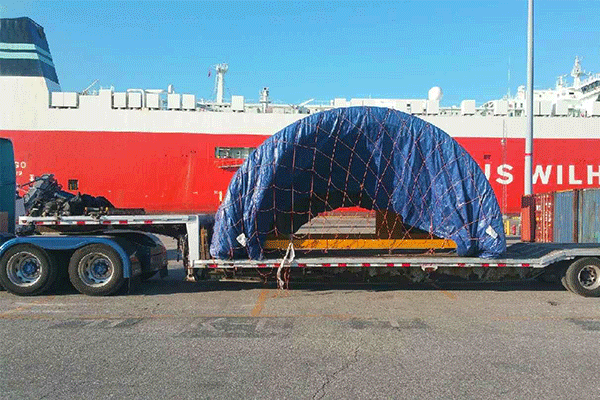
#3 Your Freight’s Origin/Destination
Where your commodity begins its journey, as well as where it ends up, plays a large role in the price of getting it moved.
First, let’s talk about your freight’s destination.
Drivers are incredibly plugged into the ebbs and flows of the trucking market. As such, an experienced transportation provider — like a trucker or carrier — has a firm understanding of whether they’ll be able to find outbound freight in your destination location.
Moving freight is their job and they don’t get paid if they’re not doing it. Additionally, truck drivers are a class of workers that offer a service that they can only offer for a limited time.
You see, according to the Federal Motor Carrier Safety Administration (FMCSA), truckers can only be actively on-duty for 11-hours within a 24 hour period of time. This timeframe includes all government-mandated breaks leaving truck drivers with very specific — and consistently monitored — hours of service (HOS).
As a result of these restrictions, carriers are heavily motivated to plan their loads out in advance. Working with shippers whose freight will put them in a position for their next shipment helps them stick to these schedules.
This is where your freight’s destination comes into play. Many of this nation’s 19,495 incorporated towns and cities have little outbound freight needs.
Destinations without demand for a trucker’s trailer after they drop off freight don’t put this nation’s drivers in a position to make money. Often, the truck drivers who end up in these locations are required to “deadhead” (drive to their next pick-up location without a load on their trailer).
Drivers aren’t paid for deadhead miles — making them more likely to avoid areas outside of their normal network.
As such, expect to pay more to get freight to destinations where a trucker’s next load will be hard to come by as the pool of willing drivers you have to select from diminishes and deadhead is factored into your rates.
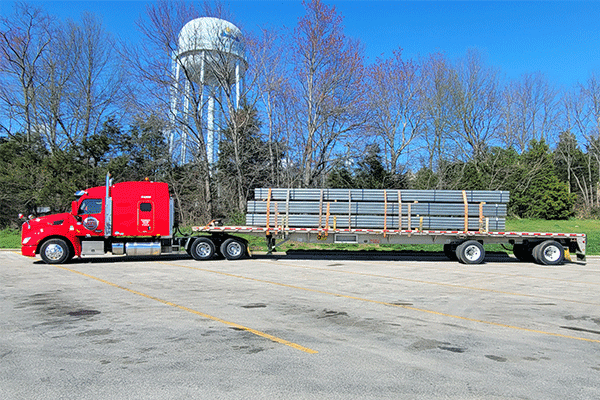
Now . . . to origin.
Supply and demand dictate the cost of moving all kinds of cargo — open-deck freight included. As the number of available trucks and trailers (supply) in your origin increases, and the demand for their services decreases, the cost of finding a solution for your freight will decrease to match.
Conversely, if your goods need to be moved from a location without a large supply of available truck capacity, finding a willing party will be more difficult. Maybe a trucker will have to deadhead to your location before they can even begin moving your load.
Should that happen, you’ll pay more to compensate your truck driver for the empty miles, and time they spent to get to your location.
#4 Seasonality
“Uh oh, it’s that time of year again.”
A phrase as old as the Mayan calendar. A phrase that means different things depending on which industry you’re in. A phrase that sums up seasonality in the trucking world perfectly.
From sea to shining sea, there is always something going on. Some niche market moving goods. A large demand spike here, a fall-off in open-deck trailer supply there.
Depending on what time of year it is, the types of goods soaking up truck capacity fluctuate greatly. The supply of trucks in these regions becomes flush as the demand for their services increases.
Should your supply chain run up against any of this country’s many shipping seasons, your rates will rise as you compete with other shippers for trailer space.
For example, construction season in northern states through early spring-summer brings an influx of open-deck truckers into these areas. Since there’s so much demand for their services, these truck drivers like the steady payday that comes with running freight in these regions.
As a result, finding a truck to carry freight from these areas — away from the healthy bounty of open-deck demand — will cost a bit extra.
If hauling your cargo will help an open-deck driver get to this area of the U.S. though, you will likely receive a relaxed RPM.
Here at ATS, we take pride in connecting our customers to the best fit truck for their needs. So rest assured that should seasonality play a role in your freight’s journey, your budget will see the benefits.
#5 Length of Haul
Are we there yet? Not yet.
Are we there. . .yet? No.
How about now?? NO! . . . we might have gone too far.
The distance your freight has to travel to get to its final destination is a prime indicator of the price you’ll pay.
Generally, the further your freight has to go, the more it’ll end up costing — as time committed by the trucker hauling your load increases.
This shouldn’t come as a surprise though. . .
Many businesses charge more to tack on a bit more “service” at your request — the transportation world is no different.
Just as a piano lesson may cost $30 dollars/half hour and $50 dollars for a full hour, expect to pay more depending on the amount of work each driver has to put in.
That said, as a shipment’s LOH increases its average rate-per-mile (RPM) should actually soften as efficiencies are gained out on the open road. Think of this as that $10 discount you get on an extra 30 minutes of piano lessons. Man, how can you ever pass that up? I’ll take two.
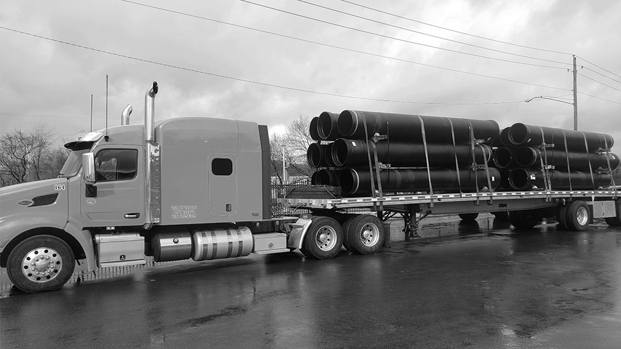
In the trucking industry, we break the different lengths of haul (LOH) into five categories:
- Short-haul (0-250 miles)
- Mid-haul (250-400 miles)
- Tweener (401-800 miles)
- Long-haul (800-1,200 miles)
- Extended-long (1200+)
To accurately compensate the truck driver for the work they put in on shorter hauls (short, mid and some tweener) you may be given a holistic day rate for your load.
Although this fluctuates based on the specific needs of your freight, typically a day rate falls between $600-$1400.
#6 The Urgency of Your Shipment
You know that running-late feeling?
Like the world will soon end if you don’t HURRY UP a little bit?
That deep pit of nausea at the thought that the car in front of you may actually be driving slow on purpose? Oh, the rage. If only you’d left a bit earlier.
Had you planned slightly better, maybe this last-second rush could’ve been avoided. . . if only.
Yeah, needing to get somewhere with urgency can be stressful and, in the transportation world, this stress often equates to dollars lost.
You aren’t the only shipper looking to move some goods.
No, semi-trucks are responsible for transporting nearly 70 percent of this nation’s freight. Things are always moving, and the shippers who save the most money are always planning.
“Lead time” is the term we use to describe the amount of warning shippers give their transportation providers to find them a solution for their freight. As lead time diminishes, a transportation company’s ability to provide its service at competitive price points diminishes.
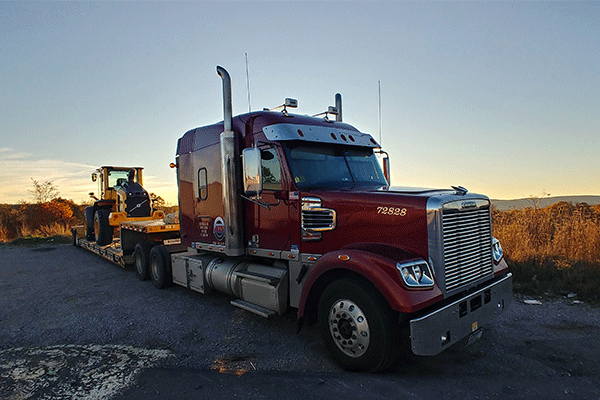
When lead time dips below the 24-hour mark — where a shipment needs to be picked within 24 hours of notification — finding a solution gets pretty expensive.
Since drivers like to plan their loads out days in advance — to maximize their HOS clock — there simply aren’t a lot of trucks with empty trailers on short notice.
So yeah, without proper planning that pit inside your stomach may be warranted as finding a solution can be costly.
In many cases, shippers that provide proper lead time — typically 48-72 hours — are able to save substantially on their flatbed costs. These savings may even arch as high as 25% on a well-planned shipment compared to a last-second hail mary.
#7 Accessorial Charges
Everybody likes an add-on, a bit extra. Having a little bit more of something, especially if it makes your life easier, isn’t a bad thing. With so many other things going on in your day to day, if it’ll improve the quality of your product and make your customers happy why not throw it in?
Seems reasonable enough. In the trucking industry, though, just like at your favorite local burrito joint, guac costs extra. And boy, do we have a lot of guac.
There are a ton of additional services available to shippers in this industry. From tarping to liftgates and from drop trailers to white glove pick-ups. Rest assured; If your shipment needs it, we can provide it. . . but not for free.
Common Open-Deck Accessorial Charges
| Charge Name | Cost Range |
| Detention Charge | $50-$75 per hour |
| Layover Fees | $250-$500 |
| Tarp Charge | $100-$150 |
| Driver Assist Charge | $100-$200 |
| Stop Charge | $50-$100 per stop |
Charges for various services crop up from each shipment to the next raising freight rates to match each carrier’s output.
If you’d like to have your load tarped, you’ll need to pay a tarping fee.
If you want a driver to help you unload his trailer, expect a price hike.
If loading times get ahead of you, you’ll need to pay a detention charge to compensate the driver waiting for you to finish.
If you want a little extra hot fudge on that sunday, you’ll have to go to McDonald’s. We don’t serve fast food. . . we’re a trucking company. Sheesh.
Luckily though, accessorial fees like these can be avoided if need be. With proper planning — and oversight from a seasoned provider — any unnecessary charges won’t touch your freight rates.
#8 Weather
Ok, it’s confession time. I don’t love driving through severe weather events. . . there, I said it.
I know, call me crazy but there’s just something about low visibility, slippery roads and 70 mph speed limits that sets my teeth on edge. Could be the chance of death, but I’m no psychologist.
That said, whether you like it or not, the weather can be a disruptive force in the transportation industry.
Truck drivers don’t like risking their necks by hauling loads when the weather is a factor. And who can blame them? An 80,000-pound truck, trailer and freight combination doesn’t stop nearly as quickly as a 2011 Toyota Camry and even taking that for a spin during a snowstorm is risky.
As such, you’ll need to pay more to find a driver to haul freight when the weather makes doing so dangerous.
In these situations, it’s usually best to let the storm pass whenever you can. You’ll be able to find a willing party but you’ll pay them a pretty penny to take your load.
Couple in the fact that open-deck freight may require tarping when precipitation is present and you’ll find that inclement weather plays a very important role in your freight rates.
If you’re hoping to save some money on your flatbed freight costs, it’s best to consult the national weather channel and plan accordingly.
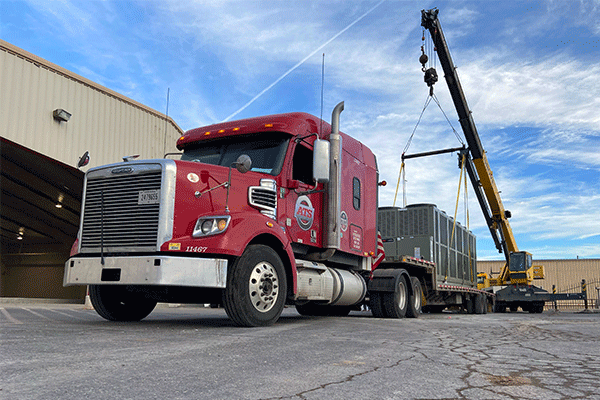
What Will Your Open-Deck Freight Cost?
Now that you have a better understanding of the major factors that impact the cost of moving open-deck freight, you’re ready for your very own freight rate.
The moment has come to find out exactly what it will cost to get your commodity where it needs to go. Although your load is unique and some of the factors above may not apply to it, it’s time to find out.
We have a transportation expert standing by, ready to give you an accurate price based on your freight‘s needs as they relate to current market conditions.
Connect with an expert today and wave goodbye to the uncertainty of shoddy transportation partnerships. And, should you have a question about your freight rates, we’re happy to answer it fully and transparently. I promise the answer you receive won’t be nearly as long as this article. . . unless you want it to be.





